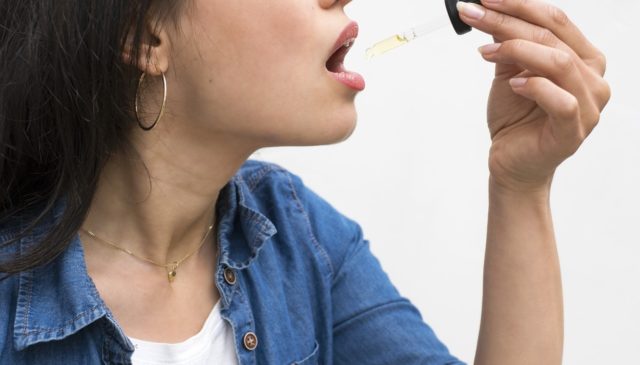
Cannabidiol (CBD) is well tolerated and is often used in the form of prescription Epidiolex®. It is sold over the counter and over the Internet nationwide. This cannabinoid is legal because it is made in the hemp plant that produces little tetrahydrocannabinol (THC) and for which cultivation became legal in 2018. [1] CBD facilitates various well-studied pharmacological effects on the body such as anxiety relief, anti-inflammatory, neuroprotection, antipsychosis, and anti-epilepsy. [2]
CBD offers a unique mechanism of action for multiple disease targets for which few other treatment options exist. Cannabidiol does not act selectively on a single receptor in the human body like many drugs. Activity on multiple receptors enables a wide range of medicinal benefits, but also enables the potential for drug interactions. [2]
Potential adverse interactions occur primarily in the liver, where drugs are metabolized and detoxified by a group of enzymes Cytochrome enzymes. Negative side effects can occur when the same detoxifying enzyme is responsible for a variety of drugs. Other drugs like lorazepam and even popular diet products like caffeine can have significant interactions with CBD in the liver.
Two of the most common side effects seen when administering CBD are drowsiness and sedation. [2]
Currently, CBD is ingested by millions of people without prior assessment of age, health, current medical conditions, genetic analysis, or current drug use. Because of its widespread use, a thorough understanding of the adverse effects and potential toxicity of CBD is required. Even so, the incidence of side effects is considered to be low and benign compared to traditional drug treatments.
One of the overarching problems with CBD is its inconsistency with what products are available online or in retail stores. Mislabeling, inaccurate concentrations and contamination are common risks that can lead to additional and unpredictable adverse effects. [3] Ultimately, the dosage forms (i.e. capsules, tinctures, vapes, etc.) of CBD lead to variations Bioavailability in the body; Combined with the wide dosage range (~ 10 mg – 2,000 mg) of CBD, this can lead to potential side effects and toxicity. [4]
As CBD becomes more popular, standardized methods of making and analyzing CBD are certain to emerge. Doctors can evaluate the patient’s condition and medications to ensure maximum benefits and minimal side effects.
picture:: Erin_Hinterland of Pixabay
References::
- Mead A. Legal and regulatory issues related to cannabis and cannabis-derived products in the United States. Front Plant Sci. 2019; 10: 697. 10.3389 / fpls.2019.00697. Times quoted = 24 (Semantic Scholar), Journal Impact Factor = 4.407
- Huestis M et al. Cannabidiol side effects and toxicity. Current neuropharmacology. 2019; 17: 974- 989.10.2174 / 1570159X17666190603171901. Times cited = 49 (Semantic Scholar), Journal Impact Factor = 4.668
- Yang YT et al. U.S. Food and Drug Administration Approval for First Cannabis-Derived Medicine: Are We Out of the Haze? JAMA Neurol. 2018; 76 (2): 135-1. 136. 10.1001 / jamaneurol.2018.3550. Times quoted = 12 (Semantic Scholar), Journal Impact Factor = 13.608
- Khoury JM et al. Is there a role for cannabidiol in psychiatry? World J Biol Psychiatry. 2017; 20 (2): 1-16: 10.1080 / 15622975.2017.1285049. Times quoted = 14 (Semantic Scholar), Journal Impact Factor = 4.225
